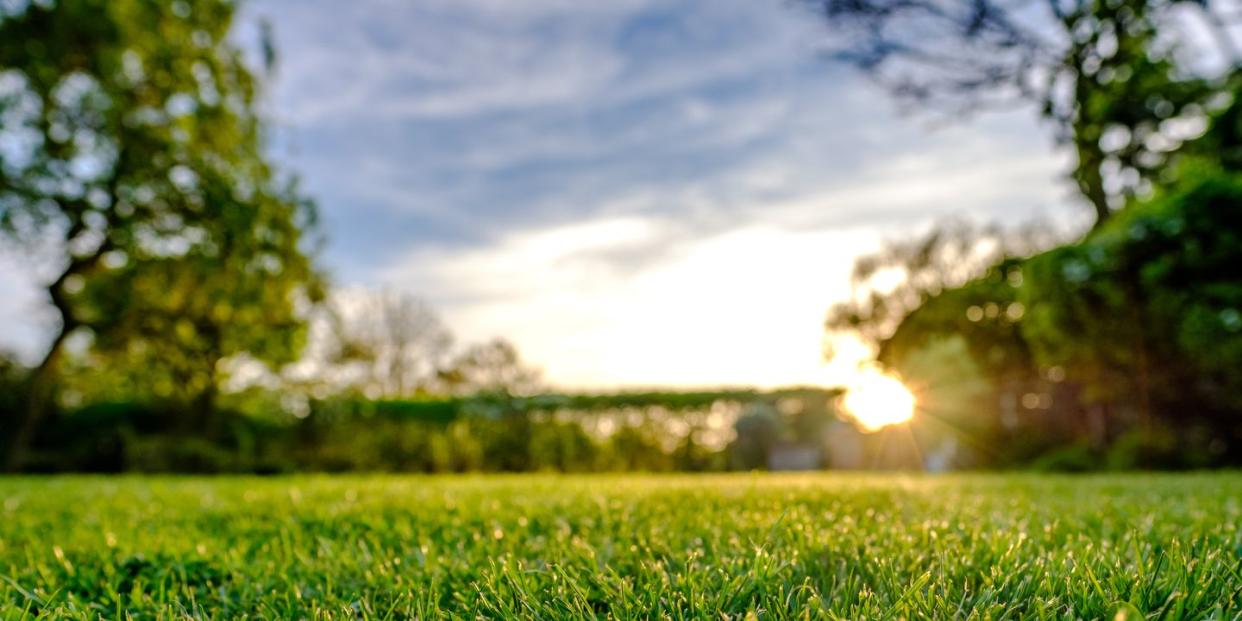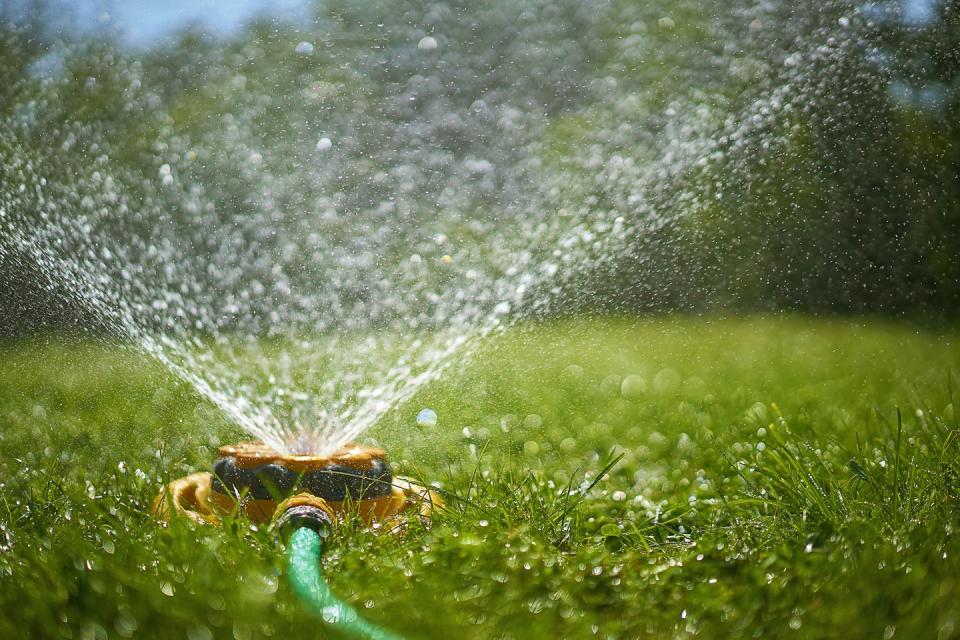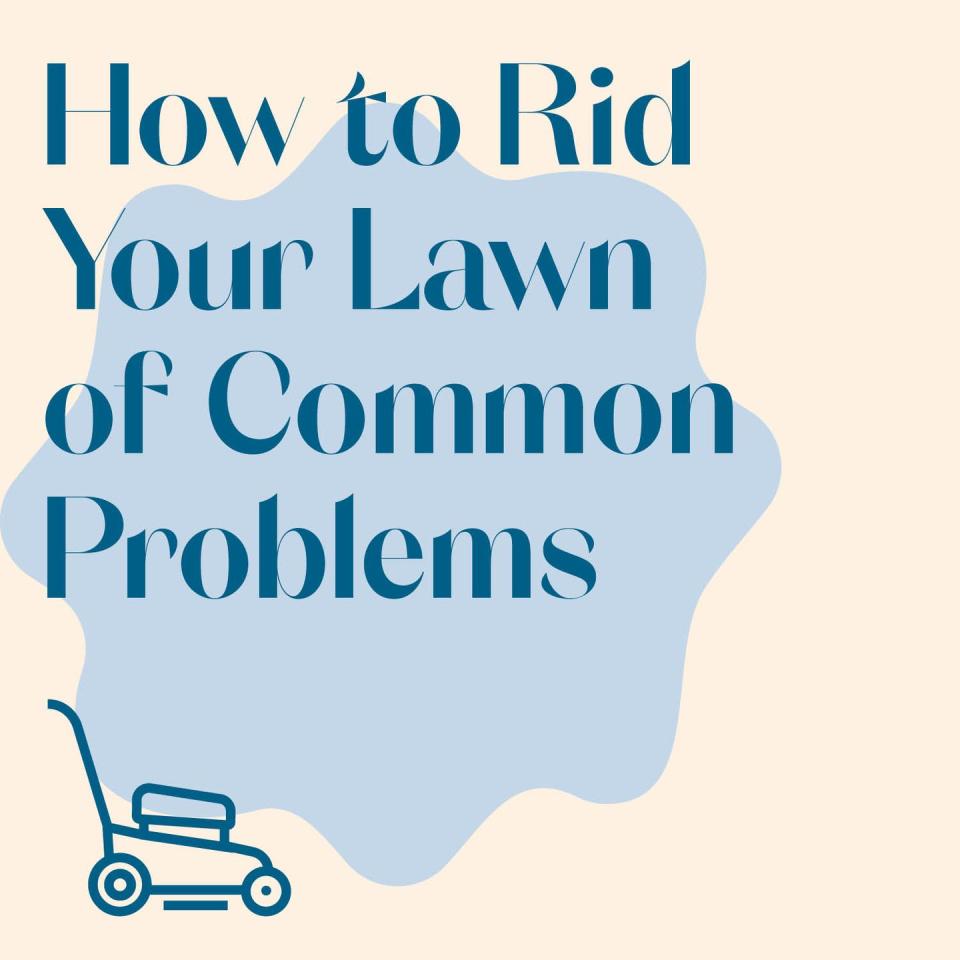A 365-Day Timeline of Caring for Your Lawn

No pressure or anything, but your lawn has needs and it’s relying on you! For starters, timing is everything. Fertilizer and weed control must go down at specific times, based on environmental conditions and the type of grass you have. But it's not so simple—that depends on where you live.
Grasses are divided into two categories: warm season and cool season. “Warm season grasses actively grow during the warm times of the year, which is roughly May to mid-September,” says Clint Waltz, turfgrass (that's the technical term for grasses that grow into lawns!) specialist at the University of Georgia. “Cool season grasses actively grow during the cooler times of the year until cold and snow set in, typically from December to early February.”
Generally, warm season grasses, such as zoysia and bermudagrass, are found in the south. Cool season grasses, such as Kentucky blue and tall fescue, grow in the north and upper third of the country. But in transitional parts of the country, such as the Mid-Atlantic, you may have both types! Your local university coop extension service (find yours here) can help if you don’t know what you have and can also often provide regional care tips.

Here’s a timeline to make your lawn the best on the block:
Spring Lawn Care (March-May)
This will be your busiest time of year as your lawn heads out of dormancy into growing season. Here’s what to do:
Aerate your lawn
Your lawn may become compacted due to traffic from kids, pets, and vehicles. A core aerator pulls up small plugs, loosening soil and increasing the availability of oxygen, water, and nutrients to the root system. Aeration looks messy because the cores remain on the lawn to decompose, but you can break them up with a rake. You can rent a machine to DIY this task, but the equipment is heavy and unwieldy so it's probably worth hiring out. You’ll usually need to aerate every few years, especially in heavy or clay soils. Make sure you do it only when grass is actively growing.
Dethatch your lawn

Thatch is a layer of living and dead grass that accumulates between the growing plants and soil. Small areas can be done with a dethatching rake; large areas require power dethatching equipment that’s best left to the pros, because improper technique can destroy your lawn. Do this when grass is actively growing and thatch has built up and feels springy underfoot, usually ½ to 1 inch deep.
Prep your mower
Tune up your mower and sharpen your blades before the first cut. “Sharp blades make a clean cut, as opposed to dull ones, which shred the leaf blades,” says Waltz. Not only does a clean cut look better, but research has shown that it makes grass less susceptible to disease and able to use water more efficiently.
Mow regularly
Grass is healthiest and crowds out weeds best when mowed at the correct height, which varies by species. For example, zoysia should be mowed at 1 to 1 ½ inches tall, while tall fescue should be mowed at 2 to 3 inches. Typically, you’ll need to mow every 7 to 10 days, taking off only 1/3 of the leaf canopy at a time, says Waltz.
Fertilize at the right time

“Plants can’t use fertilizer before root activity starts,” says Waltz. Nutrients also get wasted and leach into groundwater (an environmental no-no!), instead of feeding the plants. For warm season grasses, apply spring fertilizer when soil temperatures remain about 65 degrees at a four-inch depth, which is usually April to May. Cool season grasses have active growth when soil temperatures are in the 50s, which also is April to May. But timing varies every year, so find local soil temps by searching for “soil temperature maps near me” or check here to ensure you're being efficient with your application.
Put down a pre-emergent
If you’re planning to use a pre-emergent herbicide, apply it before weeds germinate. Don’t watch the calendar date; pay attention to what Mother Nature is doing this year. For example, crabgrass germinates at around 55 degrees no matter where you live, so watch soil temperatures and apply at the ideal time.
Use a grub treatment, if needed
Got grubs? In some areas of the country, you may have perpetual issues with grubs, which attack turfgrass roots. Get preventive treatments down now to take grubs out while they’re young. It’s too late to apply grub control in fall when you often see turf damage from grubs or wildlife, such as skunks and crows, digging up your yard for grub snacks.

Summer Lawn Care (May-September)
Summer is about maintenance and looking out for potential problems. Here’s what to do:
Keep mowing as needed
If you’re experiencing drought, raise the mower height to the upper end of the range for your species of grass. Sharpen your blades again mid-season to ensure clean cuts.

Water properly

A lawn gives you clues that it needs water. Look for footprints left when you walk across the lawn or wilting, which looks like the turfgrass is turning inward on itself so that it resembles drinking straws. Also, water in the morning, if possible, so more water gets to the root zone and less evaporates.
Control weeds
If broadleaf weeds such as dandelions have appeared, get 'em while they’re young and easier to eradicate. Spot treat with a selective herbicide that won’t kill the grass, too. Or, use some elbow grease and dig weeds up to remove the roots. Do it before weeds flower or go to seed because some varieties can produce tens of thousands of seeds.
Watch for diseases and pests

If you see anything funky—worms or other weird bugs, mold, patches of lawn that are dying—don’t wait around to see what happens. Contact your local university coop extension service for ID and management tips. With some conditions, your lawn will be fine without treatment. But for others, you’ll want to be proactive. For example, certain kinds of fungi on warm season grasses cause turf to be slow greening up next spring so it’s better to treat now, says Waltz.

Fall Lawn Care (September to November)
Things are winding down for warm season turfgrass, but cool season still is actively growing. Here’s what to do:
Fertilize cool season grasses
Cool season grasses are kicking into high gear now, so they need a boost. But leave warm season grasses to go dormant naturally. You don’t want to put nitrogen past September 1 on warm season grasses because you don’t want juvenile growth going into winter, says Waltz.
Continue to monitor for pests
This time of year, bugs such as Armyworms are an issue in some parts of the country, such as the Southeast. These should be treated because they can devour a lawn in a few days, says Waltz.
Aerate and overseed
If you needed to (but didn’t) aerate this spring, fall is still a good time. It’s also the ideal time to overseed and fill in sparse areas. It may seem counterintuitive, but it’s best to seed in the fall when the warm soil helps seeds generate more quickly, temperatures are less extreme, and the seedlings are less stressed.
Follow House Beautiful on Instagram.
You Might Also Like

